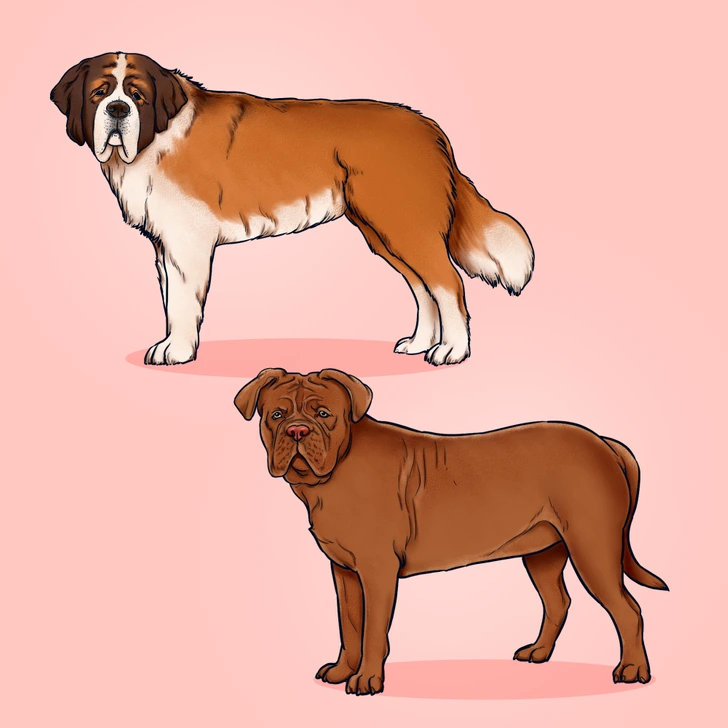Understanding the Lifespan of Different Dog Breeds
When welcoming a dog into your home, it’s important to consider their potential lifespan along with other factors like their health and lifestyle. Dogs’ lifespans can vary significantly based on their breed, ranging from under 10 years to over 20 years.
Lifestyle

Providing your dog with a balanced lifestyle is crucial for their well-being. Regular physical activity, such as daily walks and playtime, helps keep them healthy and happy. Some dogs may benefit from additional exercise opportunities, such as off-leash play in safe, designated areas.
Many dog owners also enroll their pets in training classes or social activities, which can cater to the individual needs of their dog. The type and amount of activity required will depend on the dog’s breed and personal preferences.
Health

To support a long and healthy life for your dog, regular veterinary check-ups are essential. Keeping up with vaccinations, routine health screenings, and dental care can prevent many health issues. Chronic conditions should be managed closely with your vet’s guidance.
Different breeds are predisposed to certain health conditions, so it’s helpful to understand common issues for your dog’s breed and monitor for any symptoms. Regular dental check-ups are also important, as dental disease can lead to serious health problems.
Hygiene

Maintaining good hygiene is important for your dog’s health. Regularly cleaning your dog’s paws after walks helps prevent the buildup of dirt and debris. Bathing, brushing, and grooming should be done according to your dog’s coat type. Regular ear and eye checks, as well as dental care, are also essential for overall well-being. Clean your dog’s bowls, toys, and bedding regularly to avoid bacterial growth.
Nutrition

A balanced diet is vital for your dog’s health. Whether you choose commercial dog food or prepare meals yourself, ensure that their diet includes the right balance of proteins, fats, carbohydrates, vitamins, and minerals. Consult with your veterinarian to tailor their diet to their specific needs and avoid overfeeding, as excess weight can negatively affect their health and lifespan.
Lifespan by Dog Size
In general, smaller dogs tend to live longer than larger dogs. While the exact reasons aren’t fully understood, it’s observed that smaller breeds often experience fewer age-related diseases.
– Small dogs typically live 10–15 years, with some breeds reaching 18 years or more.
– Medium-sized dogs usually have a lifespan of around 10–13 years.
– Large dogs generally live 8–12 years.
These figures are averages and can vary based on individual health, care, and genetics. Mixed-breed dogs often have longer lifespans than purebred dogs, potentially due to reduced risk of genetic disorders.
Average Lifespan of Popular Breeds

– Labrador Retriever — 11 years
– German Shepherd — 11 years
– Golden Retriever — 11 years
– French Bulldog — 8–10 years
– Bulldog — 8–12 years
– Beagle — 12–15 years
– Poodle — 12 years
– Rottweiler — 9 years
– German Shorthaired Pointer — 12–14 years
– Boxer — 9–10 years
– Siberian Husky — 12–15 years
– Great Dane — 6–8 years
– Pembroke Welsh Corgi — 12–15 years
– Doberman Pinscher — 10–13 years
– Australian Shepherd — 12–18 years
– Miniature Schnauzer — 12–14 years
– Cavalier King Charles Spaniel — 9–14 years
– Shih Tzu — 12–16 years
– Boston Terrier — 11–15 years
– Havanese — 14–16 years
– Shetland Sheepdog — 12–13 years
– Bernese Mountain Dog — 6–8 years
– Pug — 12–15 years
– Russian Toy — 10–15 years
Breeds with Shorter Lifespans

– French Mastiff — 5–8 years
– Great Dane — 6–8 years
– Bernese Mountain Dog — 6–8 years
– Irish Wolfhound — 6–10 years
– Neapolitan Mastiff — 7–9 years
– Leonberger — 8–9 years
– Newfoundland — 8–10 years
– Saint Bernard — 8–10 years
– Scottish Deerhound — 8–10 years
– Bloodhound — 9–11 years
Breeds with Longer Lifespans

– Mediterranean Maltese — 12–15 years
– Jack Russell Terrier — 13–16 years
– Yorkshire Terrier — 16–20 years
– Toy Poodle — 14–20 years
– Cockapoo — 12–18 years
– Scottish Collie — 12–16 years
– Lhasa Apso — 14–20 years
– Pomeranian — 12–16 years
– Dachshund — 14–20 years
– Chihuahua — 14–20 years
Signs of Aging in Dogs

As dogs age, they may show various signs that can help you adjust their care:
– Eyes: Vision may decline, and eyes might become cloudy.
– Frequent Urination: Often linked to kidney issues in older dogs.
– Behavior Changes: Increased irritability, confusion, or signs of dementia.
– Difficulty Getting Up: Potentially due to arthritis or hip dysplasia.
– Weight Changes: Metabolic rate changes can cause weight gain or loss.
– Lethargy: Decreased interest in play and exercise.
– Sleepiness: Increased need for rest.
– Fatty Lumps: Benign lumps known as lipomas may develop.
Regular veterinary check-ups and appropriate care can help manage these aging signs and ensure your dog enjoys a comfortable and healthy life.




